#Albert Einstein Gymnasium
Note
Stell dir vor du gehst ans Albert Einstein Gymnasium, bist in der 12. Klasse, willst unbedingt ein gutes Abi machen und viel lernen um Arzt etc. zu werden und dann musst du einfach mit 11 jährigen in den Wald ziehen, weil dein Internatsleiter den Wocheinkauf nicht schafft
Joel würde wahnsinnig werden. Hauser zerstört seine Karriere!
21 notes
·
View notes
Text
Ich find aber auch den enormen Wechsel zwischen "Ernsthaftigkeit, Drama, deep-talks bis hin zum größten Liebeskummer" und dem "totalen Kindergarten, über Teddybären, fliegende Einhörner", aber auch echt krass schlimm.
In der einen Szene wird man emotional auseinander genommen und in den nächsten zwei Minuten wird man von Regenbögen und Glitzer überschüttet. Dieser Switch ist einfach nur anstrengend.
Ich weiß nicht was ich davon halten soll. Wenn wir mit Noah, Joel, Ava und Colin Content gefüttert werden, fühlt es sich, allein durch die schauspielerischen Leistungen der 4 schon nach allem an, außer nach Schloss Einstein.
Die Story reißt einen so mit und besitzt fast eine gewisse Kinoreife.
Die Teddybären-Szene, mit Karl und Maxi, ist auch ein anderes Level von cringe. Da muss ich sagen, Herr Zech hat meine Blicke sowie Gedanken mehr als deutlich wieder gespiegelt, in den letzten beiden Folgen.
Kein Albert-Einstein-Gymnasium mehr, nur noch Albert-Einstein-Kindertagesstätte!
17 notes
·
View notes
Text
Albert Einstein: A Revolutionary Thinker

Introduction
Quantum mechanics is the branch of physics that studies the behavior of matter and energy in the presence of an observer. It is the foundation of modern physics and the theory of wave-particle duality.
OMG did you understand that description of Quantum Physics? Probably not but in its simplest form, it's the physics that explains how everything works.
Who was Albert Einstein and What Did he Do?
Albert Einstein was born in 1879 in Ulm, Germany. He didn't speak until he was four and didn't read until he was seven, but he always had a great love for learning. He eventually dropped out of school and started working in a patent office. In his spare time, he thought about science and did experiments.
He is best known for his theory of relativity, which has revolutionized our understanding of the universe. He also developed the famous equation E=mc2, which has been dubbed the “world’s most famous equation.”
Einstein’s contributions to science are vast and have had a profound impact on the world we live in today.

Victorian classroom. Image by Belinda Fewings. Unsplash.
Early Life and Struggles
Albert Einstein was born in Ulm, Germany in 1879. His father was a salesman and his mother was a homemaker. When he was four years old, his father showed him a compass. Albert was fascinated by the way the needle always pointed in the same direction, regardless of which way the compass was turned. This experience would later play a role in his theory of relativity.
Albert attended a Catholic elementary school and then a humanist gymnasium. He showed an early interest in science, but he also loved music and played the violin.
In 1895, Albert's family moved to Milan, Italy to escape the political turmoil in Germany. Albert stayed behind to finish his schooling, but he soon joined them in Italy.
Albert hated the strict discipline at his new school and decided to drop out before graduating. This decision would have profound implications for his future career.
In 1902, and without a diploma, Albert began working at the Swiss Patent Office in Bern. He found the work to be monotonous but he enjoyed the intellectual stimulation of reading scientific papers during his lunch breaks.
In 1903, Albert married Mileva Maric, a Serbian physicist. The couple had two sons, but their marriage ultimately ended in divorce.
To further his studies and without a diploma, Albert could not attend university in Germany. He then decided to start studying at the Swiss Federal Polytechnic to further his education. In 1900 he received a bachelor's degree.
After his degree, he enrolled at the University of Zurich in Switzerland, where he studied physics and mathematics. In 1905 he got his Ph.D., and in that same year published four groundbreaking papers that changed the course of physics forever. These papers introduced the concepts of special relativity, mass-energy equivalence, and quantum theory.
The Social and Political Impact of His Work
Albert Einstein's work had a profound social and political impact on the world. He developed the theory of relativity, which challenged traditional ideas about space and time. His work also helped to pave the way for the development of nuclear weapons.
In addition, Einstein was a strong advocate for peace and social justice. He spoke out against violence and xenophobia, and he championed the rights of workers and minorities. As a result of his work and his activism, Albert Einstein is considered one of the most influential figures of the twentieth century.
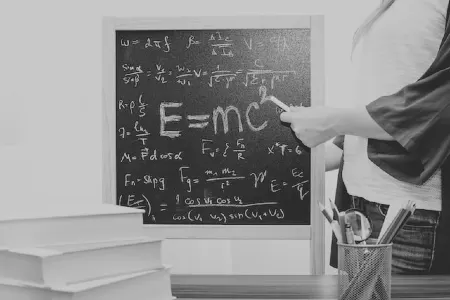
Theory of relativity. Photo by Jeshoots. Unsplash.
What Breakthroughs Did He Make in Science?
Albert Einstein is one of the most renowned scientists of the twentieth century. His work in physics changed our understanding of the universe, and his name has become synonymous with genius. However, Einstein's contributions to science went beyond just his groundbreaking theories.
He also made important discoveries in other fields, including astronomy and optics. For example, in 1911 he predicted the deflection of light by massive objects, a phenomenon that was later confirmed by observations of a total eclipse. Einstein's work in Optics also led to the development of fiber optics and holography.
In addition to his scientific achievements, Albert Einstein was also a gifted mathematician. He made significant contributions to the field of mathematics, including developing a new way of understanding spatial geometry. Albert Einstein's legacy is one of immense intellectual achievement, and his impact on science is still felt today.

Chalkboard equations. Photo by Dan Cristian Padure. Unsplash.
His Later Years and Legacy
In his later years, Albert Einstein continued to push the boundaries of knowledge, seeking to uncover the hidden secrets of nature.
His work took him on a quest to discover a unified field theory, a grand attempt to find a single equation that would describe all the forces of nature. Although he was not successful in this endeavor, his work laid the foundation for future scientists.
He also became an outspoken advocate for peace, using his platform to speak out against the proliferation of nuclear weapons.
After he died in 1955, Albert Einstein's legacy lived on. His theories continued to be developed and expanded upon by subsequent generations of physicists.
Today, Albert Einstein is widely considered to be one of the most influential scientists of all time.
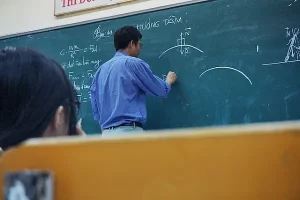
Professor teaching students. Photo by Tra Nguyen. Unsplash.
What We Can Learn From Him Today?
One of the things that we can learn from Albert Einstein is the importance of thinking outside the box. He was not afraid to challenge conventional ideas, and his willingness to question accepted wisdom led him to make some of the most significant discoveries in physics.
In addition, Albert Einstein emphasized the importance of simplicity. He once said,
Everything should be made as simple as possible, but not simpler.
This philosophy can be applied to many areas of life, and it is a useful reminder that sometimes the simplest solution is the best.
Finally, Albert Einstein was a strong advocate for peaceful coexistence. In a time when the world was on the brink of war, he urged leaders to resolve their differences through diplomacy rather than violence.
Today, as we face many challenges as a global community, Albert Einstein's words still ring true. His legacy provides us with an important reminder that peace is possible if we are willing to work together.

Nuclear testing at Bikini Atoll. Photo by WikiImages. Pixabay.
Conclusion
Albert Einstein was one of the most influential scientists of the twentieth century. His work in physics changed our understanding of the universe, and his name has become synonymous with genius.
However, Einstein's contributions to science went beyond just his groundbreaking theories. He also made important discoveries in other fields, including astronomy, optics, and mathematics.
Although he faced many challenges during his life, Albert Einstein never gave up in pursuit of knowledge. He was always willing to question accepted wisdom and explore new ideas.
As a humanitarian, he was a strong advocate for peaceful coexistence. In a time when the world was on the brink of war, he urged leaders to resolve their differences through diplomacy rather than violence.
Today, as we face many challenges as a global community, Albert Einstein's words still ring true. His legacy provides us with an important reminder that peace is possible if we are willing to work together.
Sources: THX News, Wikipedia, Physics Today & Stanford.
Read the full article
#AlbertEinstein#AlbertEinstein'swork#Globalchallenges#Legacyanddiscoveries#Mathematicscontributions#Opticsinphysics#Peaceadvocacy#Physicsandscience#Pursuitofknowledge#Specialrelativitytheory#Theoryofrelativity
0 notes
Link
Tal día como hoy, en 1900, nace Wofgang Ernst Pauli, físico austro-americano, Nobel de Física en 1945, por su descubrimiento del principio de exclusión, que estableció definitivamente la mecánica cuántica.
https://buff.ly/41IcCzG
0 notes
Text
Le curiosità della vita che Albert Einstein ci ha lasciato
Albert Einstein: la storia e le frasi dell’uomo che rivoluzionò la fisica. Chi era Albert Einstein, lo scienziato eccentrico che ha rivoluzionato l'intero modo di pensare non solo nella fisica
Scienziato curioso ed eccentrico, filosofo, fisico geniale e premio Nobel. Albert Einstein e, intimamente legata a lui la sua teoria della relatività (pubblicata esattamente il 20 marzo del 1916), è uno dei più importanti studiosi e pensatori del XX secolo. A lui sono stati dedicati l’elemento chimico einsteinio, la Medaglia Albert Einstein, un premio, un asteroide, un cratere sulla luna, una unità di misura per l’energia raggiante e un numero infinito di istituti e università. Ma chi era Albert Einstein? E qual è stata la sua vera rivoluzione?
Se il premio Nobel per la fisica gli fu assegnato “per i contributi alla fisica teorica, in particolare per la scoperta della legge dell’effetto fotoelettrico”, la sua fama è stata di contro sempre e indissolubilmente allacciata alla “teoria della relatività”: la teoria della relatività ristretta, in primo luogo, che precedette di circa dieci anni quella della relatività generale.
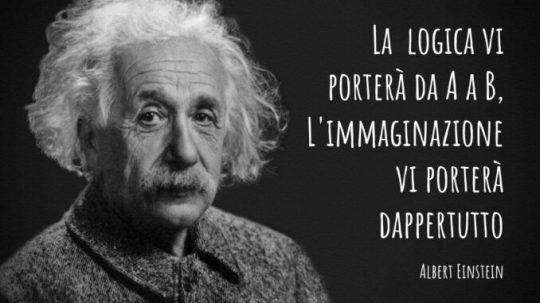
Il suo nome è legato a parecchie curiosità e ad altrettanti racconti. Quel che è certo è che Albert Einstein fu uno scienziato dal successo spropositato, di cui lui stesso era consapevole al punto di esprimere verbalmente il desiderio di mettere il proprio corpo a disposizione della scienza una volta morto.
Collezionò, nel corso della sua vita, parecchie lauree ad honorem in scienze, medicina e filosofia da molte università europee e americane. Durante gli anni ’20 tenne lezioni in Europa, in America e in Estremo Oriente ed ebbe borse di studio o incarichi onorari nelle principali accademie scientifiche di tutto il mondo. Oltre al Nobel, ottenne numerosi premi in riconoscimento del suo lavoro, tra cui la Medaglia di Copley della Royal Society di Londra nel 1925 e la Medaglia di Franklin dell’Istituto Franklin nel 1935.
Albert Einstein, la storia
Nacque a Ulm, nel Württemberg, in Germania, il 14 marzo 1879, da una benestante famiglia ebraica. Il padre, Hermann Einstein, era proprietario di una piccola azienda che produceva macchinari elettrici. Poco tempo dopo, la famiglia si trasferì a Monaco, dove il padre aprì insieme con il fratello Jacob una piccola officina elettrotecnica. Qui Albert iniziò la sua scuola presso la Luitpold Gymnasium.
Ancora dopo gli Einstein si trasferirono in Italia, ma Albert continuò la sua formazione a Aarau, in Svizzera e nel 1896 entrò nella Politecnico Federale Politecnico di Zurigo per essere addestrato come insegnante di fisica e matematica. Nel 1901, anno in cui conseguì il diploma, acquisì la cittadinanza svizzera e, non trovando un posto di insegnamento, accettò una posizione di assistente tecnico all’Ufficio Brevetti svizzero. Nel 1905 si laureò.
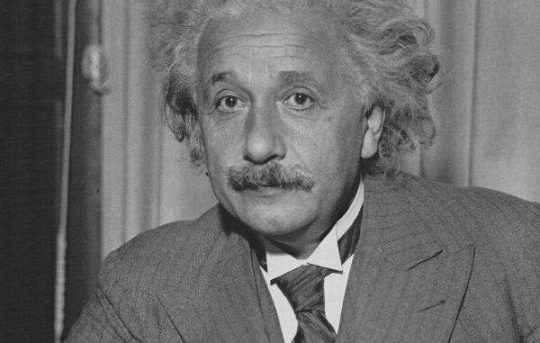
1905: l’annus mirabilis di Albert Einstein
Fu il 1905 il cosiddetto “annus mirabilis”, quello in cui ci fu una svolta nella vita di Einstein e nella storia della fisica. In pochi mesi, pubblicò sei lavori:
- un articolo che spiegava l’effetto fotoelettrico in base alla composizione della radiazione elettromagnetica di quanti discreti di energia (poi denominati fotoni), secondo il concetto di quanto che era stato ipotizzato nel 1900 da Max Planck. Questo studio gli valse il Premio Nobel per la fisica del 1921
- la tesi di dottorato sul tema “Nuova determinazione delle dimensioni molecolari“, che è poi diventato lo scritto di Einstein più citato nella letteratura scientifica degli anni ‘70
- un articolo sul moto browniano prima memoria, in data 30 giugno, dal titolo Zur Elektrodynamik bewegter Körper (Sull’elettrodinamica dei corpi in movimento) che aveva come oggetto l’interazione tra corpi carichi in movimento e il campo elettromagnetico vista da diversi osservatori in stati di moto differenti. È la teoria nota successivamente con il nome di Relatività ristretta (o speciale)
- un’altra memoria sulla relatività ristretta che conteneva la nota formula E=mc²
- un altro articolo sul moto browniano
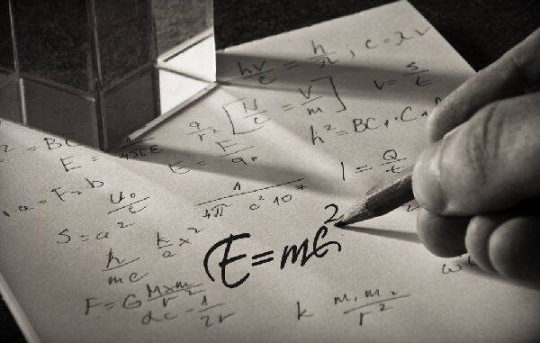
L’anno dopo, nel 1906, Einstein ottenne il dottorato e cominciò a insegnare a Berna. Nel 1911 si trasferì a Praga e nel 1914 fu nominato direttore dell’Istituto di Fisica dell’Università di Berlino, dove rimase fino al 1933. Divorziò dalla sua prima moglie Mileva e sposò in seconde nozze la cugina Elsa. Furono questi gli anni in cui effettuò alcune ricerche sulla meccanica statistica e sulla teoria della radiazione.
Albert Einstein: la teoria della relatività generale
Era il 1915 quando Einstein formulò la teoria della relatività generale, secondo cui lo spazio e il tempo non sono concetti separati ma fanno parte di uno stessa dimensione: lo spaziotempo. Secondo Einstein la forza di gravità non è l’interazione di due corpi in funzione delle loro masse, come diceva Newton, ma l’effetto di una massa che curva lo spaziotempo stesso.
Per questo quando un’astronave si trova in prossimità di un grosso corpo celeste viene attratto come da una grossa calamita.

Come c’era da aspettarsi alla sua pubblicazione, la teoria venne accolta scetticamente da parte della comunità scientifica. Ma la prima dimostrazione arrivò con l’eclissi totale di sole del 1919: alcuni scienziati videro nel buio una stella che secondo loro doveva essere oscurata dal sole perché era posizionata dietro di esso, ma la grande massa del sole incurvando lo spaziotempo permetteva alla luce della stella di compiere una traiettoria deformata quindi visibile dalla terra. Le osservazioni ebbero luogo il 29 maggio del 1919 a Sobral, in Brasile, e nell’isola di Príncipe, nello Stato di São Tomé e Príncipe e passarono alla storia come l’esperimento Einstein-Eddington.
Nel 1917 mostrò il legame tra la legge di Bohr e la formula di Planck dell’irraggiamento del corpo nero ed introdusse la nozione di emissione stimolata, che sarebbe poi stata applicata alla concezione del laser.
Max Planck non capiva nulla di fisica, perché durante l’eclissi del 1919 è rimasto in piedi tutta la notte per vedere se fosse stata confermata la curvatura della luce dovuta al campo gravitazionale. Se avesse capito la teoria, avrebbe fatto come me, e sarebbe andato a letto.(Archivio Einstein)
Da quel momento, degli esperimenti sempre più precisi hanno confermato le predizioni della teoria, prevalentemente nell’ambito dell’astronomia (precessione del perielio di Mercurio e lenti gravitazionali).
Albert Einstein, il Nobel e gli ultimi anni
Nel 1921 ottenne il Premio Nobel per la Fisica per il suo lavoro risalente al 1905 sulla spiegazione dell’effetto fotoelettrico. In quegli anni cominciò a dedicarsi anche alla ricerca di teorie di campo unificate e in seguito, nel 1927, venne invitato dal governo italiano a partecipare al Congresso internazionale dei Fisici, che si svolgeva a Como in occasione del centenario dalla morte di Alessandro Volta, ma fu l’unico a declinare l’invito per la sua opposizione al regime di Mussolini.

Con l’ascesa di Hitler, nel 1933 venne promulgata la “Legge della Restaurazione del Servizio Civile“, per la quale tutti i professori universitari di origine ebraica furono licenziati. Einstein decise così di trasferirsi negli Stati Uniti. Qui gli venne offerta una cattedra all’Institute for Advanced Study di Princeton, nel New Jersey.
Il 17 aprile del 1955 fu colpito da un’emorragia causata dalla rottura di un aneurisma dell’aorta addominale. Ricoverato all’ospedale di Princeton, morì il giorno dopo a 76 anni.
Prima di morire, espresse la volontà di mettere il proprio corpo a disposizione della scienza e Thomas Stoltz Harvey, il patologo che effettuò l’autopsia, rimosse il cervello e lo conservò a casa propria immerso nella formalina in un barattolo sottovuoto per molti anni. Il resto del corpo fu cremato. Una parte del cervello oggi è esposta al Mutter Museum di Philadelphia.

10 curiosità su Albert Einstein
- Iniziò a parlare tardissimo
- Era appassionato di vela e di musica classica
- Si definiva un agnostico più che un ateo
- Suonava il violino
- Gli fu offerto il titolo di Presidente di Israele, ma rifiutò
- Nel 1930 brevettò un frigorifero che non fu messo in commercio
- Fu uno dei 5mila firmatari della petizione per richiedere alla Germania la revoca del bando contro gli omosessuali
- Fu sospettato di essere una spia sovietica dal Direttore dell’FBI, J. Edgar Hoover
- Gli occhi e le rughe di Einstein ispirarono la fisionomia del personaggio Yoda di Star Wars
- La linguaccia, fu Arthur Sasse l’autore della foto più conosciuta di Albert Einstein, immagine probabilmente immortalata dopo una sua festa di compleanno. La foto non gli dispiacque affatto, tanto che due anni dopo ne acquistò nove copie da inviare agli amici e nel retro di una di queste, indirizzata a Howard K. Smith, scrisse:
Questo gesto vi piace, perché si rivolge a tutta l’umanità. Un civile può permettersi di fare ciò che non oserebbe un diplomatico. Il vostro fedele e riconoscente ascoltatore.
(Albert Einstein ’53)
Albert Einstein, 10 frasi celebri
“Solo due cose sono infinite: l’universo e la stupidità umana, riguardo l’universo ho ancora dei dubbi”
“Impara dal passato, vivi nel presente, spera nel futuro. L’importante è non smettere mai di farsi delle domande”
“Non cercare di diventare una persona di successo, tenta di diventare una persona di valore”
“Ognuno è un genio. Ma se si giudica un pesce dalla sua abilità di arrampicarsi sugli alberi, lui passerà tutta la sua vita a credersi stupido”
“Io appartengo all’unica razza che conosco, quella umana”
“Il mondo è il prodotto del nostro pensiero e dunque non può cambiare se prima non modifichiamo il nostro modo di pensare”
“Lo studio e la ricerca della verità e della bellezza rappresentano una sfera di attività in cui ci è permesso rimanere bambini per tutta la vita”
“Chi dice che è impossibile non dovrebbe disturbare chi ce la sta facendo”
“Un uomo è vecchio solo quando i rimpianti, in lui, superano i sogni”
“Per ogni minuto che passi arrabbiato, perdi 60 secondi di felicità”
Read the full article
#alberteinstein#E=MC²#Einstein-Eddington#motobrowniano#NobelperlaFisica#spazio-tempo#teoriadellarelatività#Württemberg
1 note
·
View note
Text
Albert Einstein nie należał do dzieci, które przyciągały szczególną uwagę nauczycieli. Uważano go raczej za dziecko dziwne, niż utalentowane. Od dziesiątego roku życia uczył się w Leopold Gymnasium. W wieku 12 lat samodzielnie nauczył się geometrii i postanowił, że pewnego dnia wyjaśni funkcjonowanie świata.
https://dziennikpolski24.pl/przepis-na-einsteina/ar/3052652
0 notes
Text
Anton Zeilinger stellt alles infrage: Albert Einstein, den Dalai Lama, elementares Wissen über die Welt. Eine Annäherung an den Menschen hinter dem Nobelpreisträger
Der Quantenphysiker Anton Zeilinger hat einen unstillbaren Drang, Gewissheiten zu hinterfragen, einen unverrückbaren Glauben an den Zufall und einen feinen Sinn für Humor.
Gioia da Silva
04.10.2022, 16.43 Uhr
Bedankt sich bei den österreichischen Steuerzahlern: Nobelpreisträger und Quantenphysiker Anton Zeilinger am 4. Oktober 2022 an einer Pressekonferenz in Wien.
Bedankt sich bei den österreichischen Steuerzahlern: Nobelpreisträger und Quantenphysiker Anton Zeilinger am 4. Oktober 2022 an einer Pressekonferenz in Wien.
Christian Bruna / EPA
Anton Zeilinger hat einen unmöglichen Job: Er steht auf einer Bühne und soll etwas erklären, was im Grunde kein Mensch verstehen kann. In der Welt, die Zeilinger erforscht, gibt es Teilchen, aber es gibt sie gleichzeitig auch nicht. Sie drehen sich nach rechts, aber gleichzeitig drehen sie sich auch nach links. Und obwohl das Publikum schon ab der dritten Minute seines Vortrags eigentlich nichts mehr versteht, hört es ihm trotzdem gebannt zu, wenn er über die Quantenphysik spricht, eine Welt, in der nichts logisch, nichts gewiss ist – ausser vielleicht dem Zufall.
Die Szene stammt aus einer Wissenschaftskonferenz, an der Zeilinger vor einigen Jahren auftrat. Er vermittelt darin den Eindruck, dass er sich schon so lange mit dem Unerklärbaren beschäftigt, dass es ihn nicht mehr wundert, nicht mehr nervt, sondern primär belustigt. Einst sagte Zeilinger zur «Zeit»: Bis neues Wissen entstehe, müsse man sich so lange mit einer Thematik beschäftigen, «bis sie einem auf die Nerven geht». Zeilinger, ein Mann mit Galgenhumor.
Anton Zeilinger versucht an einer Wissenschaftskonferenz sein Forschungsgebiet zu erklären.
Youtube
Wer Interviews mit dem Forscher hört und liest, bekommt den Eindruck: Hier spricht ein Mann, der bereit ist, alles zu hinterfragen. Albert Einstein beispielsweise glaubte, alle Objekte hätten einen Körper, der sich zu jedem Zeitpunkt an einem bestimmten Ort befinden muss. Doch was aus der gegenständlichen Welt logisch scheint, ist in der Quantenphysik falsch. Zeilinger zeigte mit seiner Forschung: Viele Dinge lassen sich nicht erklären, sie sind reiner Zufall.
Sein unverrückbarer Glaube daran brachte Zeilinger auch schon Besuch vom Dalai Lama. Das buddhistische Oberhaupt begleitete ihn zwei Tage lang im Labor, wolle aber nicht gelten lassen, dass es so etwas gebe wie den reinen Zufall. Er meinte – ähnlich wie Einstein –, Forscher wie Zeilinger müssten nur genauer hinsehen, dann würden sie die verborgenen Gründe schon finden. «Wir haben versucht, ihm zu erklären, dass genau diese Idee nicht mehr funktioniert: Das Programm einer Suche nach den verborgenen Parametern ist zusammengebrochen, es gibt sie nicht – und damit auch keine verborgenen Gründe», sagte Zeilinger nach dem Besuch aus Tibet zur «Welt».
Vom Drang, alles verstehen zu wollen
Er fände es «furchtbar», wenn man alles erklären könnte, sagte Zeilinger später in einem Interview mit der «Zeit». Trotzdem wäre er nicht Wissenschafter, hätte er nicht den unausweichlichen Drang, die Dinge verstehen zu wollen. Dieses Gefühl geht bei Zeilinger bis in die Kindheit zurück. Einst zerlegte er die Puppen seiner Schwester, weil er habe sehen wollen, wie sie funktioniert hätten, berichtete er an der Medienkonferenz nach der Preisvergabe. Sein Vater, ein Professor für Mikrobiologie, unterstützte die Ambitionen des Jungen für den wissenschaftlichen Weg, aber seine Begeisterung für Physik fand Zeilinger erst im Gymnasium – über einen talentierten Lehrer. «Stellen Sie sich vor, der Lehrer gab uns das Gefühl, dass wir die Relativitätstheorie verstehen.»
Später folgte eine klassische Forscherkarriere: ein Studium der Physik und Mathematik an der Universität Wien, Doktorat, Habilitation. Danach absolvierte er eine Karriere mit Abstecher zu den besten naturwissenschaftlichen Hochschulen der Welt: zum Massachusetts Institute of Technology (MIT), zur Humboldt-Universität zu Berlin, zum Merton College in Oxford, zum Collège de France in Paris. Als ordentlicher Professor lebt und arbeitet Zeilinger seit 1990, erst in Innsbruck, bis heute in Wien.
«Ich kann Ihnen voller Stolz sagen: Das ist für nichts gut.»
Im Nachgang zur Preisvergabe bedankte er sich denn auch erst einmal bei den österreichischen Steuerzahlern: Seine Karriere sei nur deshalb möglich gewesen, weil ihm sehr früh die Chance gegeben worden sei, jene Dinge zu erforschen, die ihn wirklich interessiert hätten – ohne Rücksicht drauf, ob seine Arbeit einen direkten Nutzen haben könnte. Er sei oft gefragt worden, wozu seine Forschung gut sein solle. «Ich kann Ihnen voller Stolz sagen: Das ist für nichts gut.» Er sei einfach seiner Neugierde gefolgt, seiner Begeisterung für die mathematische Schönheit in der Quantenphysik, der Faszination für Experimente, die der Intuition entgegenliefen.
Damit stapelt Zeilinger gar tief, hat die Quantenmechanik doch schon Geräte hervorgebracht wie Atomuhren oder Laser und wird heute als Schlüsseltechnologie für die kommenden Jahrzehnte gehandelt. Trotzdem bleibt Zeilinger dabei: An mögliche Anwendungen habe er bei seinen Experimenten kaum gedacht, dafür umso mehr an die Philosophie
0 notes
Photo

Einzelne Klassen in Kaarst und Dormagen wegen Corona-Verdachtsfällen vom Unterricht ausgeschlossen Rhein-Kreis Neuss – Im Rhein-Kreis Neuss gibt es weiter nur die eine am 3. März bestätigte Infektion mit dem Coronavirus.
#Dormagen#Kaarst#Schüler#Knechtsteden#Norbert-Gymnasium#Albert-Einstein-Gymnasium#Coronavirus#Verdachtsfälle#Schulverbot#Klassen#Lehrerin
0 notes
Text
A little late on sharing the historical facts we have shared during March, but better late than never. With this strange situation, we are happy about how we managed to stay on top of the History of Mathematics facts in March and April (as well). I cannot believe this is our 8th month we are doing this!!! So excited and thankfull for your support (check our previous: February). Hope you will like these posts!
Before we go to our normal posts, we have a couple of posts from our Women in Mathematics Calendar we have been working on:
Going on with our other lovely interesting facts:

I was impressed by how late he was appointed professor of mathematics. For me this was a case of working even harder for something and that sometimes is better later than never.

This is such an awesome quote and I love how De Beaune points out the importance of geometry.

This was an interesting find, I had no idea about the least square method until I read this and I had to look for more. If you are as curious as me, I totally recommend you check it out.

This is another case of new discovery: the Reverse Polish Notation. If you have no idea what that is, you have to check it out.

Complex numbers have been a fascination for me. It took me a lot of time to properly understand it fully and I still find myself fascinated by some aspects.

If you are not a fan of John von Neumann‘s work by this point… then you should defenetly become one…soon.

This is a quote from a 1960 letter from Hubert James: “While at the Radiation Laboratory Schwinger invented important methods in electromagnetic field theory, which were extensively employed in the development of the theory of wave guides. He developed variational techniques that produced major advances in several fields of mathematical physics. Still more important were his contributions to the development of the modern form of quantum electrodynamics, through introduction of the “renormalization” technique. For this work he received the Nature of Light Award of the National Academy of Sciences, and shared with Kurt Gödel the first award of the $15 000 Albert Einstein Prize for achievement in Natural Science.”

I have heard about this a while ago and it was a little shock for me. I have known the “L’ Hospital’s Rule” since high-school and I never thought it wasn’t by L’ Hospital… I would like to write more about this soon, just an interesting topic.

This is one of those things we should know a little bit about. Analytic geometry is really important at the moment. It is widely used in physics and engineering, and also in aviation, rocketry, space science, and spaceflight. It is the foundation of most modern fields of geometry, including algebraic, differential, discrete and computational geometry.

Gauss had always fascinated me. I think that he saw mathematics so differently than anyone else and it is fascinating to read about his discoveries.

An interesting small fact about Karl Weierstrass. I had no idea he was a gymnasium teacher before.
Hope you are enjoying this new series. We are having a lot of time searching and writing about these aspects. Enjoy the day! You can find us on Facebook, Tumblr, Twitter and Instagram. We will try to post there as often as possible.
Lots of love and don’t forget that maths is everywhere! Enjoy!
A History of Mathematics | March A little late on sharing the historical facts we have shared during March, but better late than never.
#Descartes#history#kurt godel#L&039;hopital rule#Legendre#math#mathematics#maths#Mersenne#teaching mathematics
17 notes
·
View notes
Text

23.02.2022 Good News #96
Liebe Schüler:innen, Lehrkräfte und Eltern,
das SV Team und die Sozialpädagog:innen am Lessing-Gymnasium versorgen euch weiterhin regelmäßig mit guten Nachrichten, interessanten Beiträgen und neuen Ideen.
Heute: Powernaps fördern kreative Geistesblitze
Albert Einstein, Salvador Dali und Thomas Edison, sie haben etwas gemeinsam – sie sollen das Nickerchen zwischendurch perfektioniert haben.
Probiert‘s aus, bleibt gesund & passt aufeinander auf.
Foto/Text: deutschlandfunknova.de
0 notes
Text
¿Por qué en España no hay colegios con nombres de científicos?
¿Acaso no son role models ejemplares? ¿Por qué no hay un colegio Albert Einstein, o Marie Curie, o Gauss, o Alan Turing? He vivido en otros países y ese mundo existe: el instituto de secundaria que había junto a mi casa en Dortmund se llamaba Max Planck (Max Planck Gymnasium) y estaba en la calle de Bunsen-Kirchhoff (Bunsen, Kirchhoff). Permítanme sentir un poco de envidia.
etiquetas: ciencia, educación, málaga, colegios
» noticia original (www.versvs.net)
0 notes
Video
undefined
tumblr
Die Lehrer am Albert-Einstein-Gymnasium - Sol de Sully Die Spuren des Deutschen Reiches waren noch frisch. Der Geschichtsunterricht endete zum Beispiel immer 1933 mit Hitlers Machtergreifung. Sein Klassenlehrer drohte bei Unruhe im Raum regelmäßig mit seiner SS-N...
Mehr finden Sie auf der Seite des gemeinnützigen Projektes MEMORO - Die Bank der Erinnerungen e.V. www.memoro.org/de-de/
1 note
·
View note
Text
"I don’t have to be anything at all. I don’t even have to be myself, because there is no such thing as not being myself. I am inescapably myself."
Mooji
"Every leaf that grows will tell you: what you sow will bear fruit, so if you have any sense my friend, don't plant anything but Love."
Rumi
"If you always do what you always did, you will always get what you always got."
Albert Einstein
"We are shaped by our thoughts; we become what we think. When the mind is pure, joy follows like a shadow that never leaves."
Buddha
"My love, stay here. Going in search of Self (as a goal) is illusion; You are already the One Self. You will purchase the map, Only to find you are already Here."
Mooji
"Keep me away from the wisdom which does not cry, the philosophy which does not laugh and the greatness which does not bow before children."
Rumi
"People take different roads seeking fulfilment and happiness. Just because they're not on your road does not mean they are lost."
Dalai Lama
"The world is the great gymnasium where we come to make ourselves strong."
Swami Vivekananda
"Respond to every call that excites your spirit."
Rumi
"Faith can move mountains, but it freezes your mind."
Sadhguru Jaggi Vasudev
"Step into the fire of self-discovery. This fire will not burn you, it will only burn what you are not."
Mooji
"Some of the best moments in life are the ones you can't tell anyone about."
Anonymous
"In the middle of difficulty lies opportunity."
Albert Einstein
"The simplest way to bring balance to your thoughts and emotions is unwavering commitment towards something."
Sadhguru Jaggi Vasudev
"Truth can be stated in a thousand different ways, yet each one can be true."
Swami Vivekananda
"The art of living… is neither careless drifting on the one hand nor fearful clinging to the past on the other. It consists in being sensitive to each moment, in regarding it as utterly new and unique, in having the mind open and wholly receptive."
Buddha
"Most of your desires are not really about yourself. You just picked them up from your social surroundings."
Sadhguru Jaggi Vasudev
"You yourself are your own obstacle, rise above yourself."
Rumi
"Dying to your own attachments is a beautiful death. Because this death release you into real life. You have to die as a seed to live as a tree."
Mooji
"Once your mind becomes absolutely still, your intelligence transcends human limitations."
Sadhguru Jaggi Vasudev
"The fire that warms us can also consume us; it is not the fault of the fire."
Swami Vivekananda
“Everything should be made as simple as possible, but not simpler.”
Albert Einstein
"It's pathetic that if someone has a physical issue, there is compassion, but if someone has a mental issue, there is ridicule."
Sadhguru Jaggi Vasudev
#mooji#rumi#Albert Einstein#Einstein quotes#buddha#dalai lama quotes#the dalai lama#Swami Vivekananda#Sadhguru#spiritual growth
241 notes
·
View notes
Photo

Coronavirus: Kurzfristiges Schulverbot für Schüler des Albert-Einstein-Gymnasiums Kaarst – Erneut muss am Albert-Einstein-Gymnasium ein kurzfristiges Schulverbot für rund 140 Schülerinnen und Schüler sowie 15 Lehrkräfte ausgesprochen werden.
#Kaarst#Schüler#Kreisgesundheitsamt#Lehrkräfte#Albert-Einstein-Gymnasium#Coronavirus#Schulverbot#Vorsichtsmaßnahme
0 notes
Photo

Zwei Ordnungshüter in Sankt Augustin verletzt #sanktaugustin #ordungsamt #polizei #mitarbeiter #verletzt Sankt Augustin (ots) - Zwei Mitarbeiter der Stadt Sankt Augustin haben auf ihrer abendlichen Streife (06.02.2019) gegen 19.30 Uhr ein junges Pärchen (17 und 20 Jahre alt) auf dem Gelände des Albert-Einstein-Gymnasiums angetroffen.
0 notes